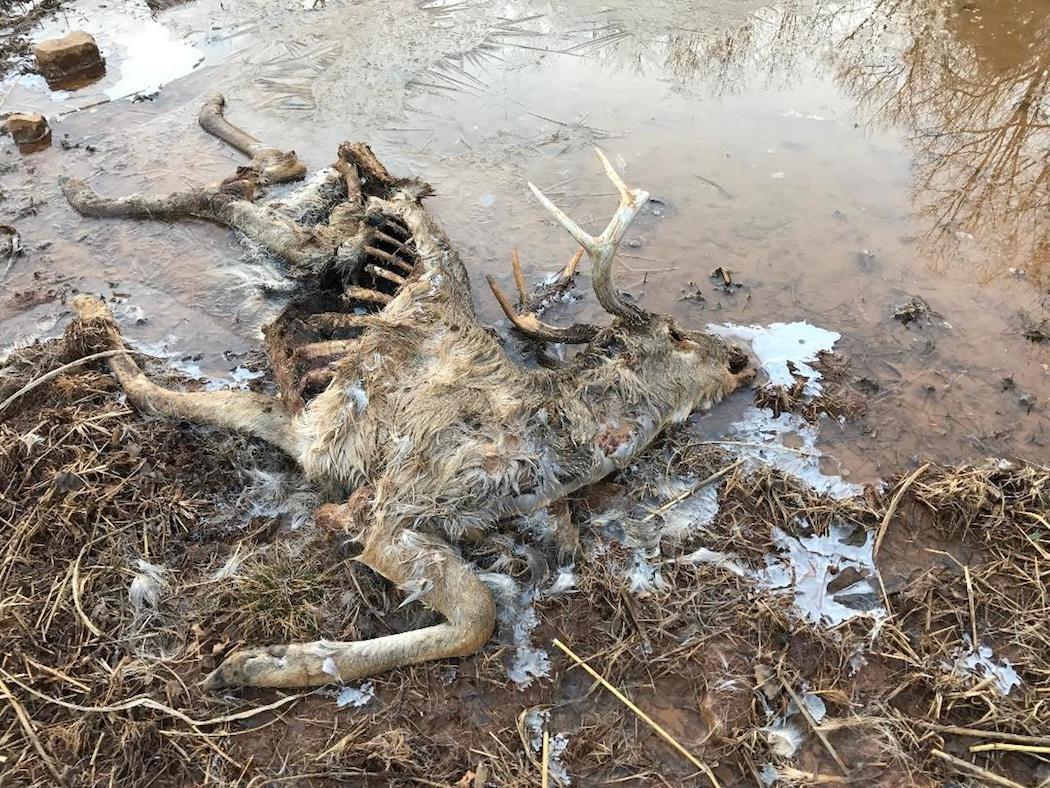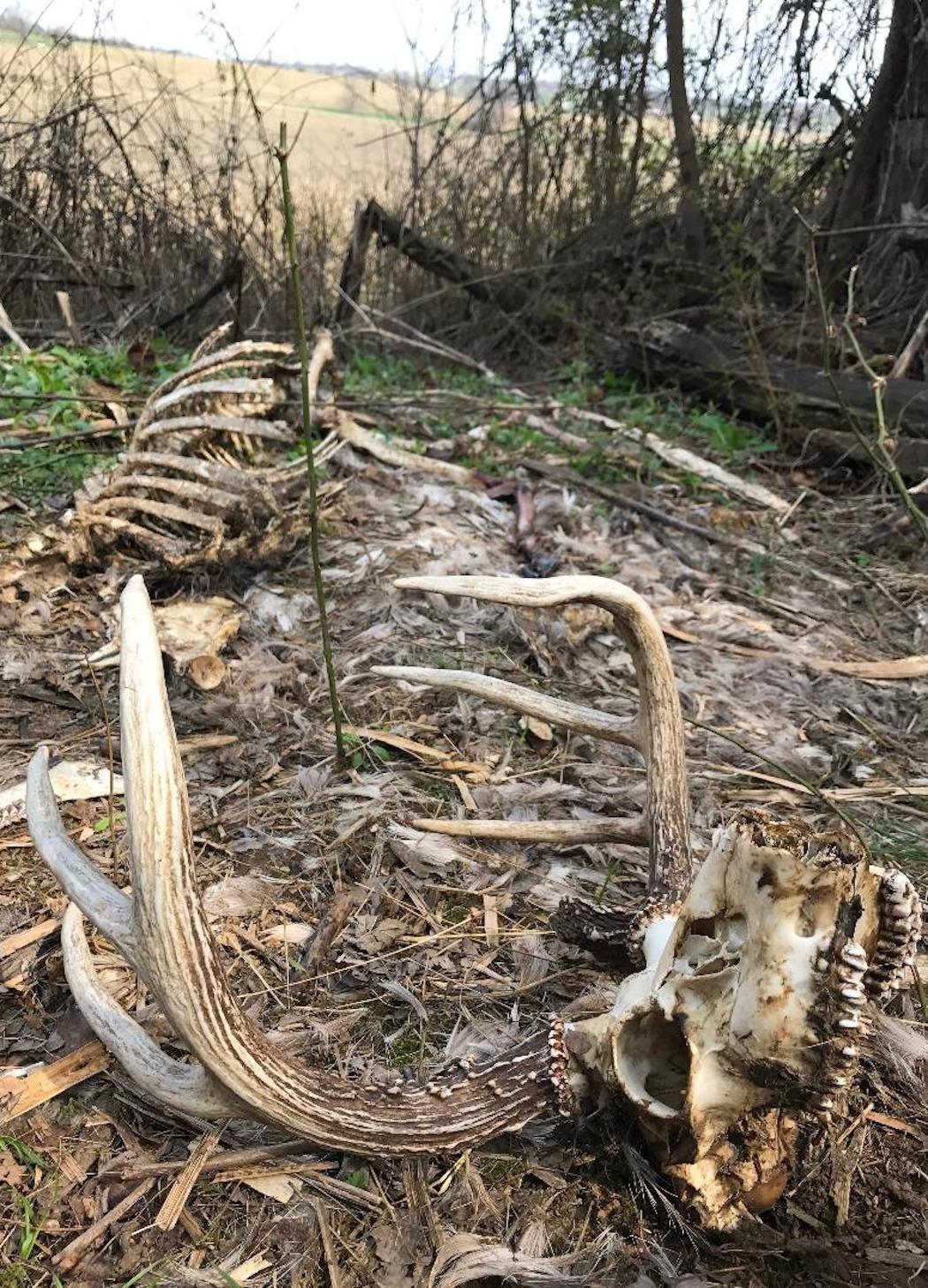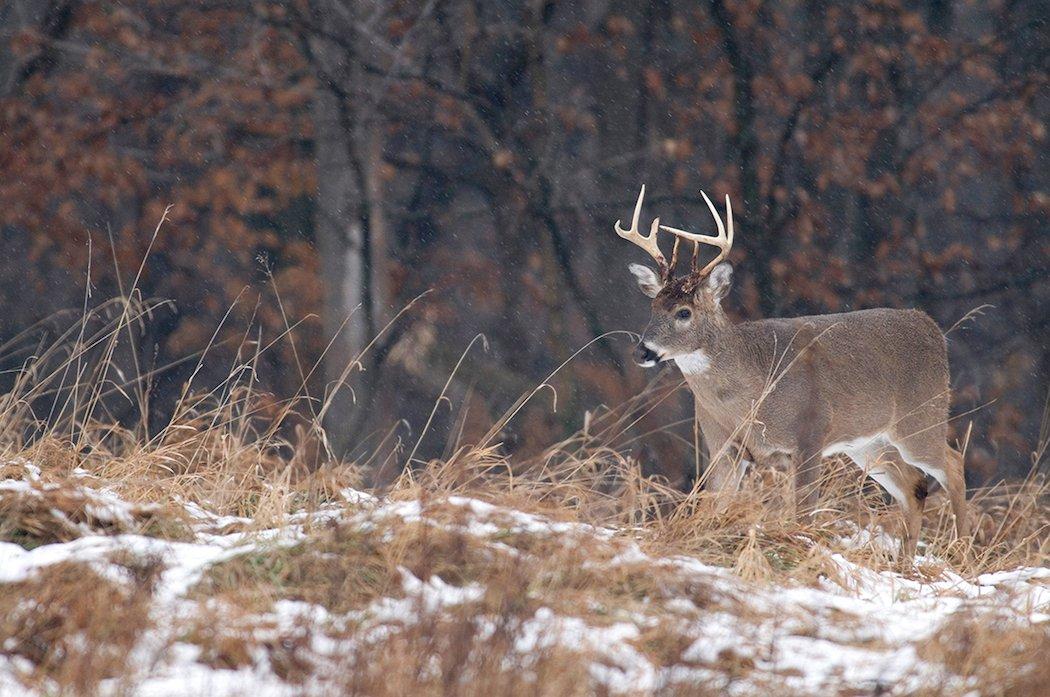Have You Found Any Dead Deer Where You Hunt?
Winter kill — it's a popular term that crops up every year. The frequency of which we hear it depends on the severity and longevity of cold weather, though.
It's been pretty persistent this year. And the chatter backs that up pretty well. We're hearing (and seeing) reports of people finding frozen deer and turkeys. Deer are being found dead in groups, frozen in time within their bedding areas.
This winter has certainly impacted deer and turkey populations in many states, said Growing Deer's Grant Woods. Folks are finding deer and turkey frozen. In addition, the harsh conditions will impact antler and fawn production.
A great point to consider, harsh winters don't just affect deer in the moment. They also cause long-term effects on numerous things. Bad, and especially extended, winters mean that does won't be in as good of shape when they fawn this spring. Does that are more prepared for fawning season will give their offspring a better headstart in life. Studies have proven as much. Many theories also suggest that antler growth is impacted as well.
While severe weather can impact deer anywhere, most winter kill occurs in the most northern states in the U.S., and into Canada. Wisconsin DNR Deer and Elk Research Scientist Daniel Storm stresses this point.
There is a huge amount of variation in winter impacts across the northern half of the country, Storm said. Even in Wisconsin, most of the winter impacts occur in the northern third of the state, where winters are most severe and there is little agriculture. Winter can impact deer populations primarily by increasing the mortality rate of deer that are experiencing their first year of life. Winter can also increase the mortality rate of newborn fawns following a harsh winter by reducing fat reserves that are needed by does to produce milk for their newborns.
Don't Miss: Why Do Whitetails Yard-Up In The Winter?
Notably, Chad Stewart, Michigan Department of Natural Resources deer, elk, and moose management specialist, says that winter kill effects are habitat-, location- and condition-dependent.
There is a lot of variation in the northern half of Michigan's whitetail deer range, so the answer will vary based on area, Stewart said. In general, we don't see much in terms of population level impacts throughout much of the northern lower peninsula and even parts of the UP, especially around Escanaba area. In other parts of the UP, winter can have an impact. We have not noticed population level impacts throughout much of the Upper Peninsula over the past four years.
Historically speaking, winter kill has had significant impacts on deer herds — especially within the last five to six years.
Parts of the UP were hit hard with winters back in 2013 and 2014, Stewart said. Since then their numbers have slowly rebounded as demonstrated by the increasing deer harvest in the UP. We have not observed large winter kills in the Northern Lower Peninsula in the past 10 years.
Storm also said that there has only truly been one severe winter in Wisconsin within the past 10 years. Like Stewart, he referenced the winter of 2013-14, which was the most severe winter in the last 50 years.
According to Stewart, it's still too early to tell just how much severe temperatures and snow cover has impacted deer this year.
We are monitoring the situation, Stewart said. There are several factors that can contribute to winter kill. One is extreme cold temperatures and prolonged heavy snow cover, which can force deer to expend energy and burn fat at higher rates. The main indicator of winter kill is a prolonged winter that holds off green vegetation. Deer can withstand cold temperatures and heavy snowfall if the promise of an early green-up occurs. However, if green-up is delayed, several younger and weaker deer could succumb to starvation. With green-up still some time away, it is too soon to know the impacts of this winter.
Wisconsin's Storm said mostly the same.
We can't yet say how strong the impact will be, Storm said. Most of the deaths due to winter severity happen during March and April, sometimes May. Only when spring arrives will we really be able to say what impact this winter has had. December 2018 in northern Wisconsin was especially mild and January was about average. February was much colder and snowier than average. It is likely that we will still have deep snow for much of March, but April is really hard to predict. In northern Wisconsin, April can resemble winter sometimes, so we monitor snow and temperature through April.
The biggest determinant of winter on deer will likely be how long the deep snow stays, which is really hard to predict, Storm continued. Most of our focus with winter impacts on deer is our northern forest, but most deer and people live in our farm country. Winter has less impact there, due to the presence of agricultural crops. However, where deep snow prevents deer from feeding on waste grain or unharvested crops, then browse in woodlands becomes critical. Deer in areas with over-browsed woods will have a harder time this winter than deer in areas with more browse.
Don't Miss: How to Live Through Hypothermia
All said, though, whitetails are tough. They've survived for thousands of years and have the tools necessary for the bulk of the herd to make it through tough winters. Whitetails are built to be resilient to the bitter cold temperatures they face.
Deer are accustomed to a variety of environmental extremes, Stewart said. Physiologically, deer have insulating hair that helps regulate their body temperature. They also have a decreased metabolism, so their energy needs aren't as high during these months. Behaviorally, deer have learned to migrate in certain areas, and spend most of their time in cedar, hemlock and spruce forests where snow doesn't build up so high on the ground.
Storm also stressed this point.
Deer will seek areas where conifers intercept the snow, making the snow on the ground less deep and easier to walk through, Storm said. They will often seek out active logging operations, where deer will feed on the tops of fallen trees.
All in all, while we have many reports of people finding dead deer, it's too early to tell just how bad 2018-19 winter kill will be. Sure, some deer have died. But the rate of such kill-off is still unknown. Only time will tell.
Don't Miss: 7 Reasons Whitetails Survive Really Cold Winters
Are you a deer hunter wanting to learn how to accomplish your goals? Check out our stories, videos and hard-hitting how-to's on deer hunting.










